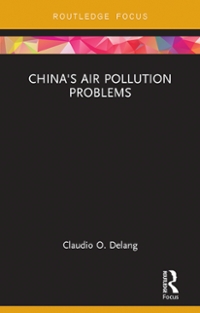Question
The recurring theme in this paper is that urbanization is not a homogeneous event. Countries can, and do, urbanize through expansion of their natural resource
The recurring theme in this paper is that urbanization is not a homogeneous event. Countries can, and do, urbanize through expansion of their natural resource exports as well as through the more traditional channel of industrialization. Empirically, we documented that the relationship between resources and urbanization is robust to the inclusion of a variety of controls and holds both in the cross-section and panel. Using discoveries and price fluctuations as instruments, there is supporting evidence that the effect of resources is causal for urbanization. The evidence suggests that resource rents can drive urbanization just as effectively as industrial development. But the cities that grow in resource-exporting countries are different. Their urban labor force is allocated to different sectors: more workers are in non-tradable services (e.g. personal services and commerce) and fewer are employed in tradable sectors (e.g. manufacturing and FIRE), compared to countries that do not depend on resource exports. There is also evidence that living conditions in these "consumption cities", as we term them, do not match those found in the "production cities" of non-resource-exporters.
The fact that urbanization is not homogeneous opens up the possibility that future growth may depend on whether urbanization is resource-led or industry-led. If there are particularly strong learning-by-doing effects in the tradable sector, then resource-led urbanizations will lead to relatively slow productivity growth due to the small size of that tradable sector. Modeling this explicitly is beyond the scope of this paper, but our work shows that it may be a fruitful way of understanding differences in urban productivity growth across countries. At the same time, it is perfectly conceivable that consumption cities could become production cities over time.40 Gold rushes led to the growth of cities such as San Francisco (from 1848), Denver (1858) and Seattle (1896). Giant oil discoveries help explain why Texan cities have been among the fastest-growing cities in the 20th century. Despite being examples of resource-led urbanization, these cities all industrialized in the long run. Consumption cities may ultimately be welfare-improving, even if they appear to fare worse than production cities in the short run. Understanding what distinguishes successful consumption cities from unsuccessful ones is beyond the scope of this paper but offers an intriguing area for further research.
Regardless of future implications, we believe there is value in showing that urbanization is more than a synonym for industrialization. Understanding the dynamics of resource-led urbanization will be important for thinking about the growth of cities and the process of development. Our results are not driven by a handful of extreme resource-exporters (e.g. Saudi Arabia) but instead hold across a whole range of developing nations. The size of the estimated effect is quite strong, indicating that an appreciable shock to resource exports (e.g. from a discovery) can raise the urbanization rate by 10-12 %points over several decades. Given the widespread reliance on resource exports in developing nations, and especially in Africa, a significant portion of urbanization in the developing world over the last few decades has been driven by resources. The implications for the long-run relationship between urbanization and growth remains a question for the future.
Question: summarize the main elements of a general conclusion part.
Step by Step Solution
There are 3 Steps involved in it
Step: 1

Get Instant Access to Expert-Tailored Solutions
See step-by-step solutions with expert insights and AI powered tools for academic success
Step: 2

Step: 3

Ace Your Homework with AI
Get the answers you need in no time with our AI-driven, step-by-step assistance
Get Started


